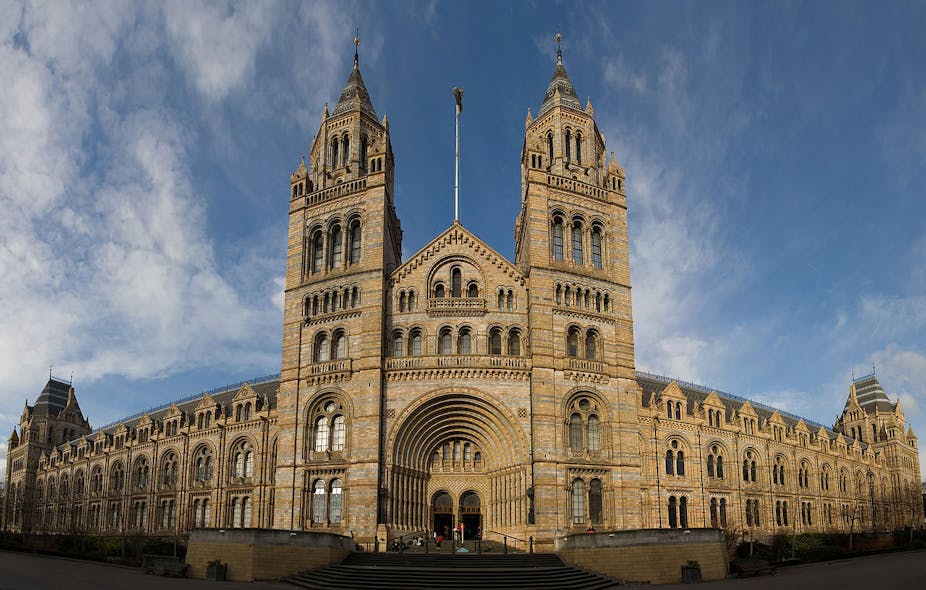The phrase “Natural History” is linked in most people’s minds today with places that use the phrase: the various Natural History Museums, or television programmes narrated so evocatively by renowned naturalist Sir David Attenborough.
As times have changed, used in its traditional sense the phrase now has an almost archaic ring to it, perhaps recalling the Victorian obsession with collecting butterflies or beetles, rocks or fossils, or stuffed birds and animals, or perhaps the 18th century best-seller, Gilbert White’s The Natural History of Selborne.
Once natural history was part of what was equally archaically called natural philosophy, encompassing the enquiry into all aspects of the natural world that we inhabit, from the tiniest creature to the largest, to molecules and materials, to planets and stars in outer space. These days, we call it science. Natural history specifically strives to study and understand organisms within their environment, which would these days equate to the disciplines of ecology or conservation.
In a recent article in the journal BioScience, a group of 17 scientists decry what they see as a shift away from this traditional learning (once typical parts of biology degrees) that taught students about organisms: where they live, what they eat, how they behave, their variety and relationships to their ecosystems in which they live.
Partly by the promise of a course-specific career, and perhaps partly because of poorly taught courses that can emphasise rote learning, students are enticed into more exciting fields such as biotechnology or evolutionary developmental biology (“evo-devo”), where understanding an organism is less important than understanding the function of a particular organ or limb.
But their challenge is not simply a revolt against the new: they note that 75% of infectious diseases that affect humans, such as bird flu, cholera and rabies, have links to other animals at some point in their lifecycle. By understanding more about these other creatures and how the disease affects them – their natural history – we are better placed to tackle the effects of the disease on us.
The authors make the same argument for other fields of study: useful sustainable agricultural practices such as companion planting, crop rotation, and pest control are making a comeback after having been largely discarded under modern farming methods. A more thorough understanding of fish lifecycles and surveys of their population could prevent disastrous fishery collapse, such as happened with walleye pollock in the Bering Sea. And the decision to rigorously suppress forest fires in the western US – on the basis of forest management principles imported from different places with different species – now costs US$1 billion a year, a cost that could have been avoided if the important natural role of fire in the ecosystem had been recognised.
It is a fact that at university level we produce fewer and fewer field-based biologists – experts who know and understand the range and variety of creatures found in real world environments, and how they live. Everything is becoming increasingly modular and based on computer models in labs as biology becomes more technologically driven.
Many of our greatest natural historians probably caught the bug precisely because of fieldwork excursions at school – the wonders of nature seen in samples taken after pond-dipping, for example. How often does that happen now? (Due to health and safety restrictions, curriculum pressures on teachers, or the absence of staff with sufficient knowledge or interest, or indeed all three, it may not happen at all.)
Scientists increasingly want to analyse data to look for trends, connections, and signs of the bigger picture. But where does this data come from? From field collections. And crucially, this data is dependent upon the fidelity of records – such as those held in such natural history museums, no less. Who are or were these collectors, what is their level of expertise, how reliable their record-keeping? And who assesses the quality of such data?
The answer depends on whether such expertise is valued, intellectually and economically, because only then will career paths emerge that will attract the future Darwins, Huxleys, Tinbergens, Fords, Southwoods, Krebs and Davies. Sir David Attenborough and Gerald Durrell have done wonderful jobs to pique our interest (and our conscience) when it comes to the natural world, and the BBC’s programmes such as Springwatch also play their part. But where are the careers for the next generation?
The authors aim to provoke and have a serious point to make. But theirs is a small voice within a deafened and distracted world. We need to realise that it is not just the data-wranglers, modellers and manipulators, but genuine expertise and enthusiasm that is needed on the ground. Keen amateur natural historians are fine, but they are not a career path for today’s future scientists. Only by expending more effort (and money) on ensuring there is training and careers for the next natural historians and biologists can we be sure that we can rely on their expertise to guide future conservation, management or policy decisions that could avoid us repeating past mistakes.
Without new naturalists, our museums with their extraordinarily rich collections of creatures and much more besides will appear as increasingly archaic, pointless stockpiles that fewer and fewer people appreciate.

